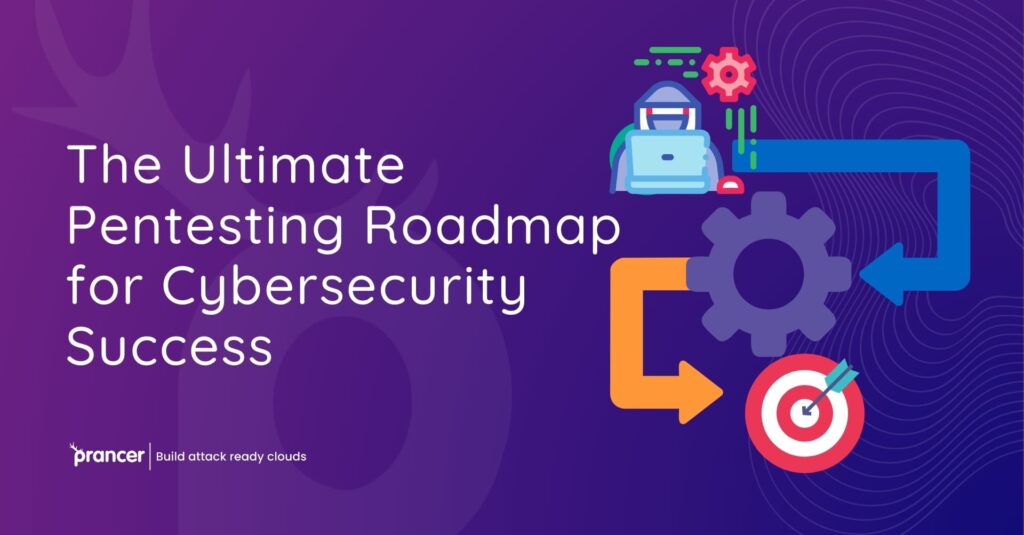

In the field of cybersecurity, where threats are constantly shifting, penetration testing has become a fundamental technique for companies and organizations to protect their resources. This article is a detailed guide on how to execute a penetration test and provides the best approaches to take to achieve success in cybersecurity. Prancer has pioneered the industry when it comes to automated penetration testing, this will help to outline the key steps, tools, and methods needed to close the security gaps and protect against cyber threats.
This is also known as ethical hacking involves an attempt on the external system to find out the weak points that might be checked by the hackers. Such approaches can be effective in ensuring that an organization has a sound security posture and can guard vital information.
A Penetration testing roadmap can be defined as the flexible comprehensive and step-by-step plan of the methodologies, tools and tactics needed to perform effective penetration testing. When carried out as a roadmap, it guarantees a methodical approach to identifying and mitigating security vulnerabilities.
The subsequent section elucidates on the reasons why every company needs a pen testing roadmap.
It is crucial to emphasize that pen testing must be performed with a specific plan in mind and is a goal that any organization that wants to protect its information technology infrastructure should strive for. It aids in the testing process, allows for the allocation of resources appropriately, and assists in covering all possible threats.
It is important to note here that the penetration testing process is usually organized into several phases, which are all crucial to provide thorough security evaluations.
Penetration testing is the use of tools and procedures to assess the vulnerabilities of an organization’s computer systems to attacks by hackers.
In general, Prancer is a great addition to the penetration testing process as it holds a crucial position. The level of automation in penetration testing provided by Prancer means that you can easily get through security testing without overlooking any questionable area.
The critical success factors that must be defined prior to conducting a penetration test include goal setting, the range of activity, and permission. The testing specification phase consists in determining the constraints of the test and requesting the appropriate permissions.
The first step in the attack is to gather information about the target system, also called reconnaissance. This phase is carried out with the use of tools and techniques to collect information like the IP address, domain information, and network mapping.
In this phase, information collected during the previous phase is analyzed to search for some weakness. Note that there are tools that help identify other exploitable weaknesses such as the vulnerability scanner.
In this stage, the attackers exploit the identified weaknesses to establish unauthorized access into the system. This phase involves validating the implemented security measures and the discovery of any weak areas.
Post exploitation consists of evaluating the consequences of the exploited vulnerabilities. This phase involves activities such as privilege escalation, data gathering, and maintaining a foothold on the target system for an extended period.
It is crucial to provide extensive reports and analytics of the penetration test for identifying the findings. This phase involves preparation of elaborate reports indicating the findings made, the type of vulnerability tested, and what should be done to mitigate the problem.
Prancer, for instance, offers automated penetration testing, which uses handy tools and scripts to conduct various repetitive tests. This approach improves on efficiency, accreditation, and area of cover which makes it necessary for penetration testing planning.
To be more precise, cybersecurity is not a finite or one-off action. In essence, it is vitally important to continually check for new threats and vulnerabilities and participate in routine testing. This is a phase of putting measures in place for identification of new threats and vulnerabilities that may prevail in an organization.
The main challenges of Penetration testing include the following; First, it is always a challenge to remain relevant given that threats are constantly evolving Second, there is always a question whether an organization has been tested sufficient. To reduce these challenges, the software development team should embrace the following best practices: Training the team, using the latest tools, and integrating with experienced testers.
Summing up, strict adherence to a penetration testing roadmap that provides a clear plan is the key to cybersecurity triumph. With the help of Prancer’s automated tool for penetration testing, security for organizations will greatly improve through the improvement of security assessments. It is crucial to stay safe online and always have your guard up: progress is ongoing, and so are the threats.